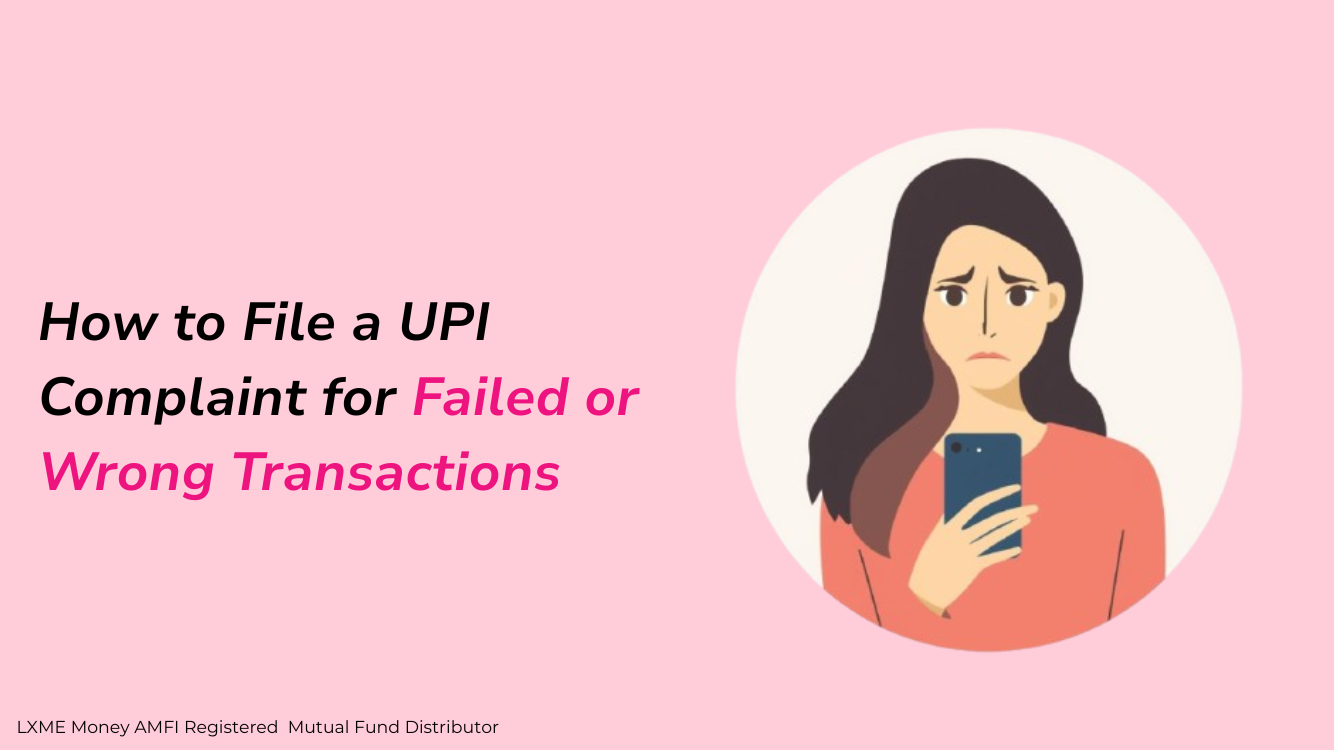We have all been here – a busy day, a quick transaction, and oops, you end up sending money to the wrong UPI ID, or the transaction doesn’t process. It might be an unsuccessful transaction or a wrong transfer to a third person. It is exasperating if you are a newbie with UPI transactions. So, what to do if something goes amiss with a UPI transaction?
So, in this blog, we’ll have a look at the UPI complaint process, how to file a UPI failed transaction complaint, and how to check the UPI complaint status check?
What is UPI? Why is UPI gaining so much popularity?
Before we talk about how you can file a complaint, let’s spend a minute or so discussing UPI (Unified Payments Interface) and why it’s a popular mode of payment for millions.
UPI is a fast, convenient, and secure way to transfer money, pay your dues, and even shop online via mobile phone. It’s a much-used service because it’s convenient to use and can be done immediately with a couple of clicks. But convenient as it is, mistakes sometimes happen if you’re not fully aware of how to go about it. From transferring money to the wrong person to being greeted with an error screen right in the middle of a transaction, UPI account holders can face a few hitches along the way.
Step-by-Step Process for Resolving a Wrong UPI Transfer and UPI Complaint Process:
It seems like a nightmare to mistakenly transfer money to the wrong UPI ID. But don’t panic, as some steps can be taken to get things right.
1. Conversation: Addressing the Receiver
To unravel a mistaken UPI money transfer, you should initially talk to the recipient. Send a polite and brief message mentioning the situation and asking for a refund. Everyone’s reasonable enough to grasp it and will be more than happy to comply. Be available for lines of communication to make things easy to resolve.
2. Contact Your Bank
If you fail to receive any response or cooperation from the recipient, then your next step is to call your bank. Inform them about the erroneous transaction and be ready to present all necessary details to them, such as the transaction ID, date, and time. Your bank will then guide you through a procedure to lodge a complaint or raise a dispute.
3. Raise a Dispute
Banks also follow a standard method to settle disputes. They will investigate your transaction and reach out to the receiving bank to settle. Be prepared to provide any information or documents they request during the process. Be sure to keep a copy of every correspondence with your bank for future purposes.
4. Submit a Complaint to NPCI
In the event that the issue is not resolved, you can escalate a higher complaint to the National Payments Corporation of India (NPCI). Visit the NPCI website or contact them through their designated means to register a complaint. Always be ready with information regarding the transaction alongside supporting documentation.
Stepwise Procedure to Resolve a Failed UPI Transaction
At times, your UPI transaction might fail due to server down problems, network issues, or a low balance. Even though such issues largely happen temporarily, here is what to do if your transaction fails:
1. Check the Transaction Status
Initially, verify if the transaction is indeed failed. Open your UPI app or your bank’s mobile banking platform and check the transaction status. If the payment is successful but has not been credited to the recipient’s account, then you might be required to take some additional steps.
2. Wait for a Few Minutes
UPI payments might be temporarily blocked. In case an error is seen, one should wait for some time and verify if the “Completed” status is displayed. Usually, it is taken care of automatically, and the money would be credited to the beneficiary.
3. Call Your Bank or UPI App Support
If the transaction is unsuccessful even after waiting, then call your bank or payment app support team. Provide them with your transaction details (transaction ID, amount, UPI ID, etc.) and ask them to investigate the issue.
4. Complaint Raise
In case the transaction didn’t go through after 24-48 hours, then register a complaint with your bank or with the paying service. There will be a dispute resolution department with most banks, as well as mobile applications, which will look into it and take corrective measures.
5. Verify Refunds
If your payment did not succeed but was deducted from your account, it should be credited back to you within 7-10 workdays. Check your account and verify if there is a refund. You can also check up with your bank to ensure that they credit the refund back.
What to Do If You Can’t Get Back Your Money?
Every now and then, things don’t go according to plan, and retrieving the money is difficult. What to do:
- Keep a copy of everything you write to your service provider or bank.
- File a police report if it’s a high value or if you believe you’ve been defrauded.
- Be cautious from here onwards. Recheck the recipient’s UPI ID once again, make sure you complete the transaction properly, and also ensure your app is updated.
Accidental UPI transfers or failed payments can be a headache, but with the right steps, you can resolve the issue without too much stress. The key is to stay calm, report the issue quickly, and be patient while the investigation takes place. It’s essential to understand that you have the right to request a refund, and there are avenues to pursue if things go awry.
FAQs
What should I do if my UPI transaction fails but the amount is debited?
You don’t have to worry. Most failed UPI transactions are automatically refunded within 24–48 hours. If the money doesn’t return, contact your bank or UPI app with the transaction details, and they will help you get it back.
What information do I need to file a UPI complaint?
To file a UPI complaint, you’ll need the following details: Transaction ID, Date and time of the transaction, UPI ID (yours and the recipient’s), Amount transferred, and A screenshot or receipt (if available). This will help the bank or UPI app investigate your issue faster.
Further read:












